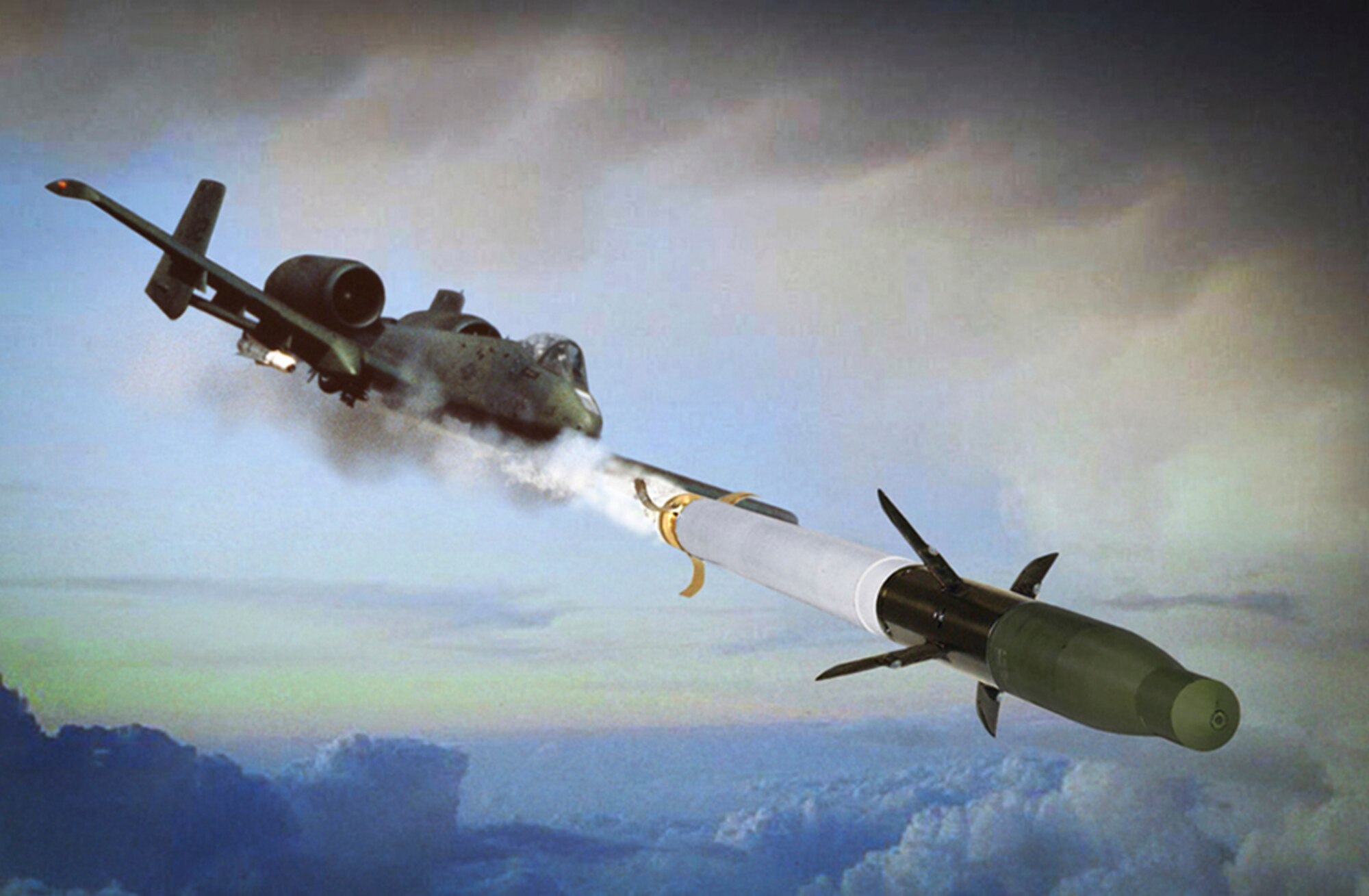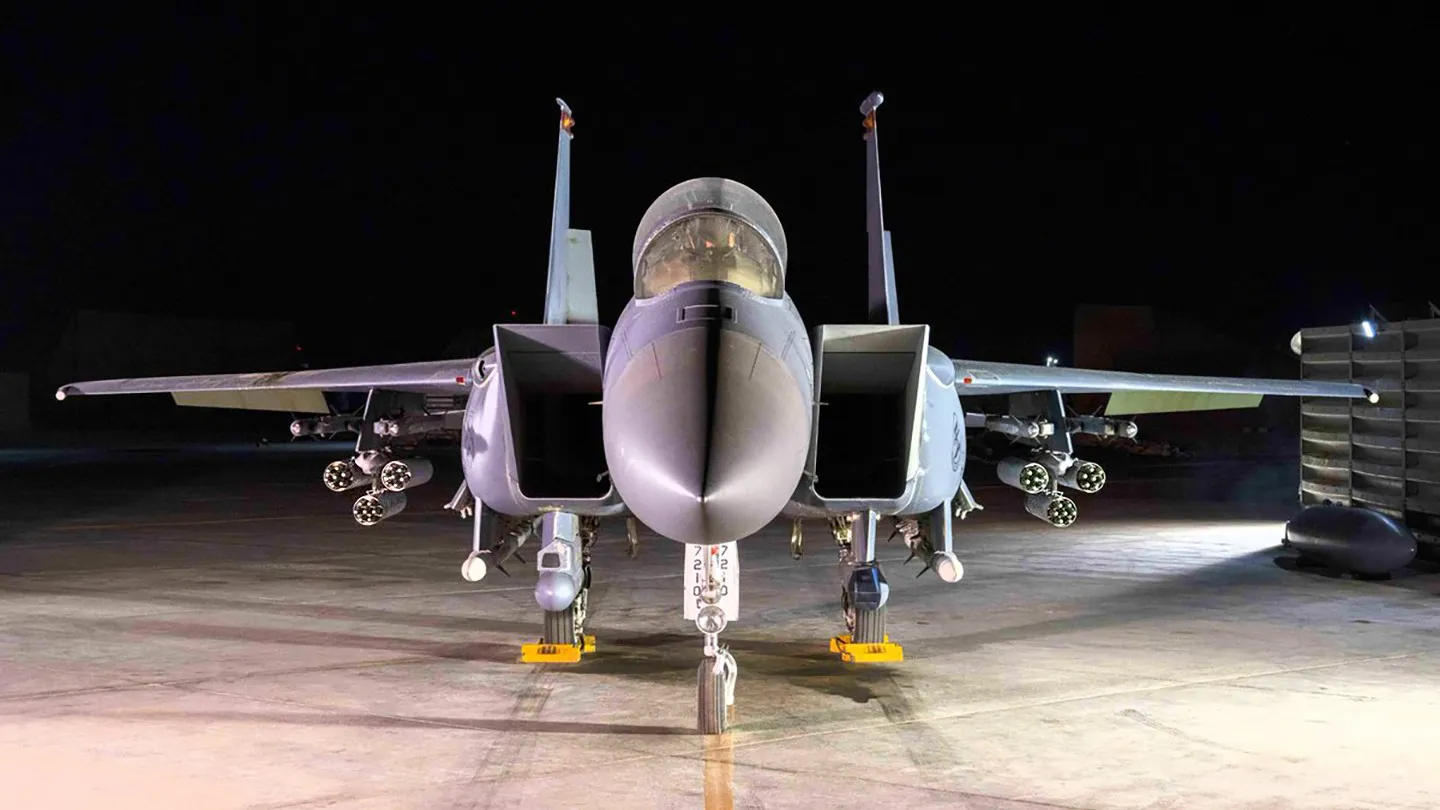The TWZ Newsletter
Weekly insights and analysis on the latest developments in military technology, strategy, and foreign policy.
We have just learned that one of the most successful adaptations of an existing weapon in recent memory — morphing laser-guided air-to-ground rockets into counter-drone weapons — can be accommodated on three USAF aircraft, not just two. First, the F-16 got the version of the Advanced Precision Kill Weapons System II (APKWS II) that takes 2.75″/70mm Hydra rockets and turns them into drone and cruise missile busters, followed very recently by the F-15E Strike Eagle. Now we have learned that the A-10 Warthog has also received at least the ability to employ these weapons in the air-to-air role, although the type’s remaining service is now measured in months, not multiple years.
In the recently released budget request for 2026, the Pentagon documentation states that APKWSs featuring guidance sections with specialized Fixed-Wing Air-Launched Counter Unmanned Aerial Systems Ordnance (FALCO) software installed are cleared for use on the F-16, F-15E, and the A-10. The rockets use laser guidance and a proximity fuze to explode near subsonic, low-maneuverability targets like drones and cruise missiles. TWZ was first to report on the testing of this configuration of APKWS back in 2019. APKWSs were first used operationally as anti-air weapons in the surface-to-air role, with Ukraine receiving the VAMPIRE system that has proven to be highly successful.

Since then, APKWS II has entered operational U.S. service in the air-to-air role, and has become a standout in the Middle East, where F-16s swatted down Houthi drones with it at a fraction of the price of an air-to-air missiles, the cheapest of which costs nearly half a million dollars. The anti-air APKWSs costs less than a tenth of that. In May, we learned the F-15E — the USAF’s most celebrated aerial drone hunter — could employ them, too. The rockets also dramatically expand the air-to-air magazine capacity of the aircraft they are mounted on (over six times the number of potential engagements in the F-15E’s case).

The A-10 as a drone hunter is an interesting prospect. The aircraft’s loiter time, slow and low-flying capabilities, and even its unique air-to-air dogfighting agility, could come in as a real benefit for taking out long-range one-way attack drones, especially the most prevalent propeller-driven type. Where the A-10 would be less effective is in rapidly taking out faster-flying drones and cruise missiles. This is due to its lower speed, with less ability to ‘run-down’ multiple targets in a short time period during incoming saturation raids. Still, AH-64 Apaches have become critical counter-drone weapons, providing screening for lower-performance long-range one-way attack munitions, particularly in Israel. The U.S. Army is also expanding its use of the Apache in this role, and helicopters, including in Ukraine, are playing a larger role in counter-drone defense, in general. The A-10 has far superior speed capabilities over helicopters, so it does sit inside something of a sweet spot, performance-wise, for dealing with lower-end, long-range drones.
The A-10 also lacks a radar, which would make it harder for it to independently spot an incoming aerial target at distance, lock its targeting pod onto it, and successfully engage it. This could potentially be overcome with a podded radar system, at least to a degree. Leveraging datalinked target tracks from off-board platforms could also significantly offset this deficiency.
On the other hand, the A-10 can also carry a lot of rockets, and I mean a lot. Extra magazine depth would be beneficial during combat air patrols that have to confront a sustained drone onslaught. Above all else, the A-10 paired with FALCO APKWSs would be most effective at defending a certain installation or limited geographical areas, such as an island outpost or forward staging area, against long-range one-way attack drones and even some cruise missiles. The same weapons can also be used against surface targets, especially long-range unmanned surface vessels. These are roles the U.S. military will have no shortage of as it prepares for a fight in the Pacific.

The counter-air APKWS portfolio is set to grow dramatically, with BAE Systems working on a seeker kit for the rockets that adds a pseudo ‘fire-and-forget’ capability. In other words, an aircraft does not have to maintain a lock on the target and continuously lase it in order for the rocket to kill it. The new seeker would look where the laser spot is pointed, then lock on and fly autonomously to its target – no further laser designation needed. This will provide for far more flexible employment of these weapons, with more targets being able to be addressed in a given time period. Right now, two aircraft work together best to execute air-to-air APKWS engagements, one lasing and firing. This should be more easily handled by one aircraft with the new upgraded seeker kits, as well.

At the same time, when it comes to the A-10, this is largely moot because the USAF has issued its final call to cull what remains of the Warthog fleet. According to its latest budget request, the Warthog’s bacon will be fried by the end of the 2026 Fiscal Year. So we are talking about just 15 months left of the iconic attack jet gracing the skies, before they are all sent to bake in the Arizona desert. Before this budget, the A-10 fleet was planned to be fully retired by the end of 2028.
On the other hand, the jet’s seemingly ready-to-go efficient counter-drone capability could actually make it more attractive for transfer to Ukraine, something that has been raised in the past. In fact, this may be even more important than its ground attack capability, or even the fact that it is a hardy jet-powered aircraft that can lug around and launch advanced NATO munitions. Currently, Ukraine’s fighter force, as well as helicopters and even dated Yak-52 trainers, are tasked with drone hunting. Augmenting this force with A-10s and freeing up the country’s F-16s and Mirage 2000s, in particular, for more advanced work could be attractive to the war-weary country. Though there has long been talk about Ukraine acquiring A-10s, many have questioned their efficacy in the conflict. Working in the Shahed-busting role certainly blunts some of those criticisms. Of course, that is if the war continues on long enough to see anything like this come to fruition.
Jordan has been raised as another potential taker for A-10s after their retirement from U.S. service. Starting last year, the Jordanian armed forces have found themselves contending with Iranian drones, as well as missiles, flying overhead on their way to targets in Israel on several occasions, and have taken action to shoot them down. Paired with FALCO APKWSs, Warthogs could also bolster Jordan’s counter-drone arsenal.
It’s a bit ironic that just as one of the world’s most iconic ground attack aircraft to ever fly is about to end its service, its air-to-air capability against drones could be one of the biggest missed opportunities brought on by its retirement.
Contact the author: Tyler@twz.com






